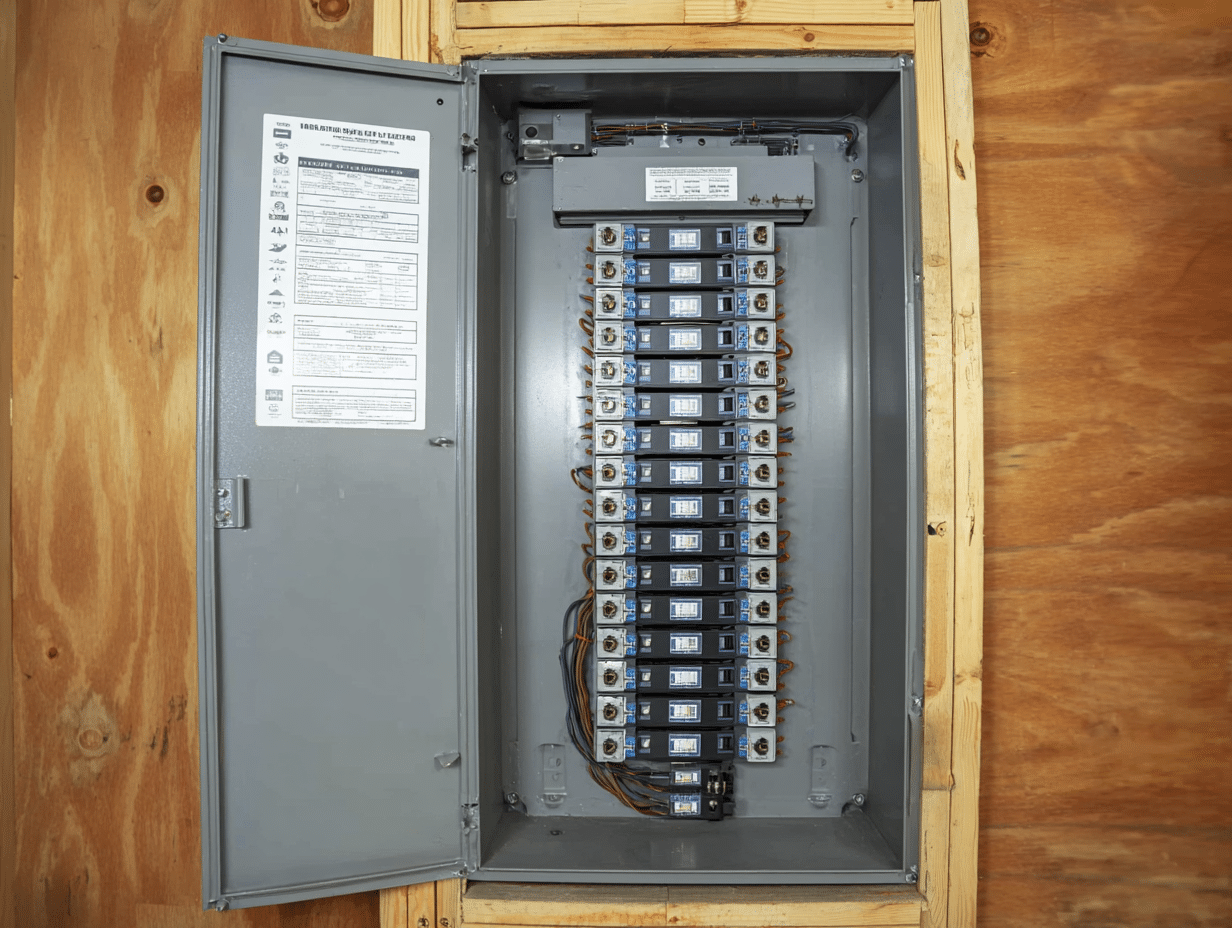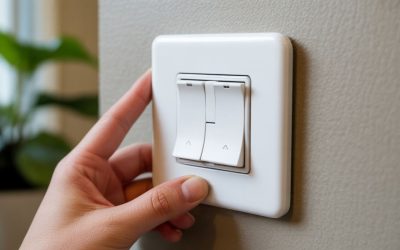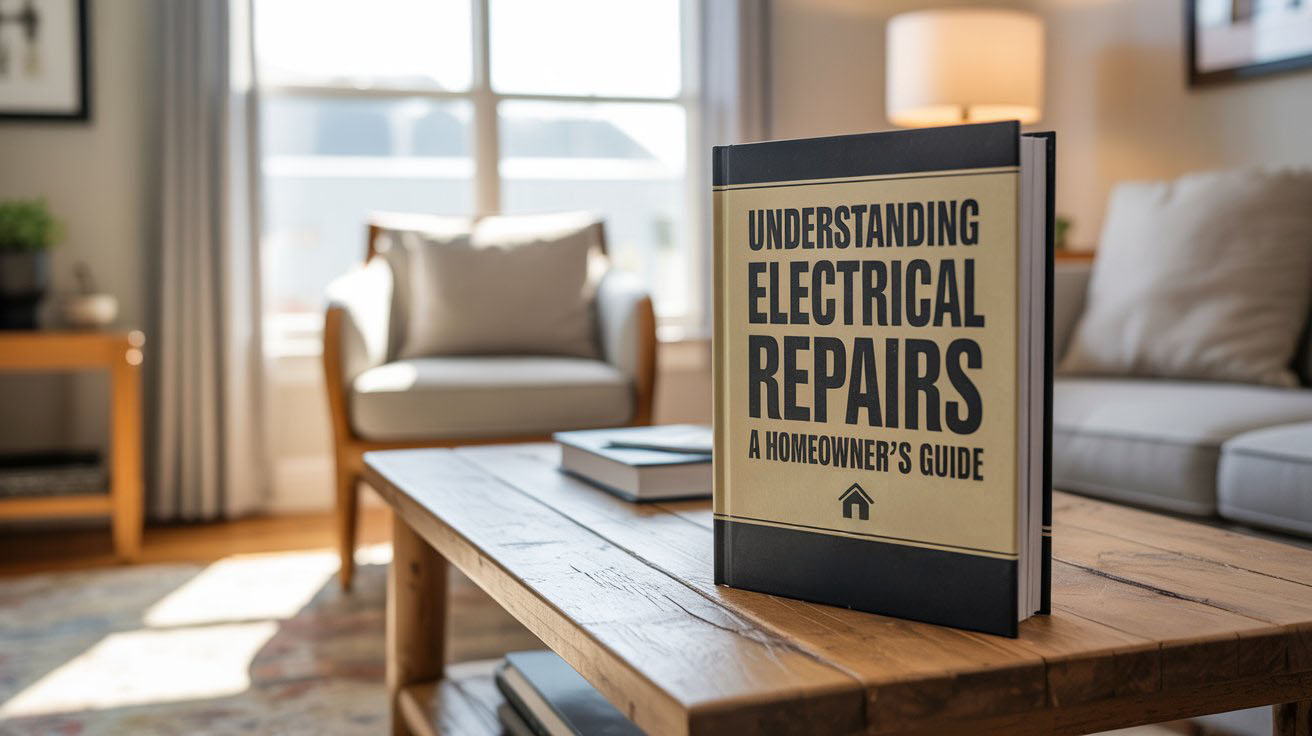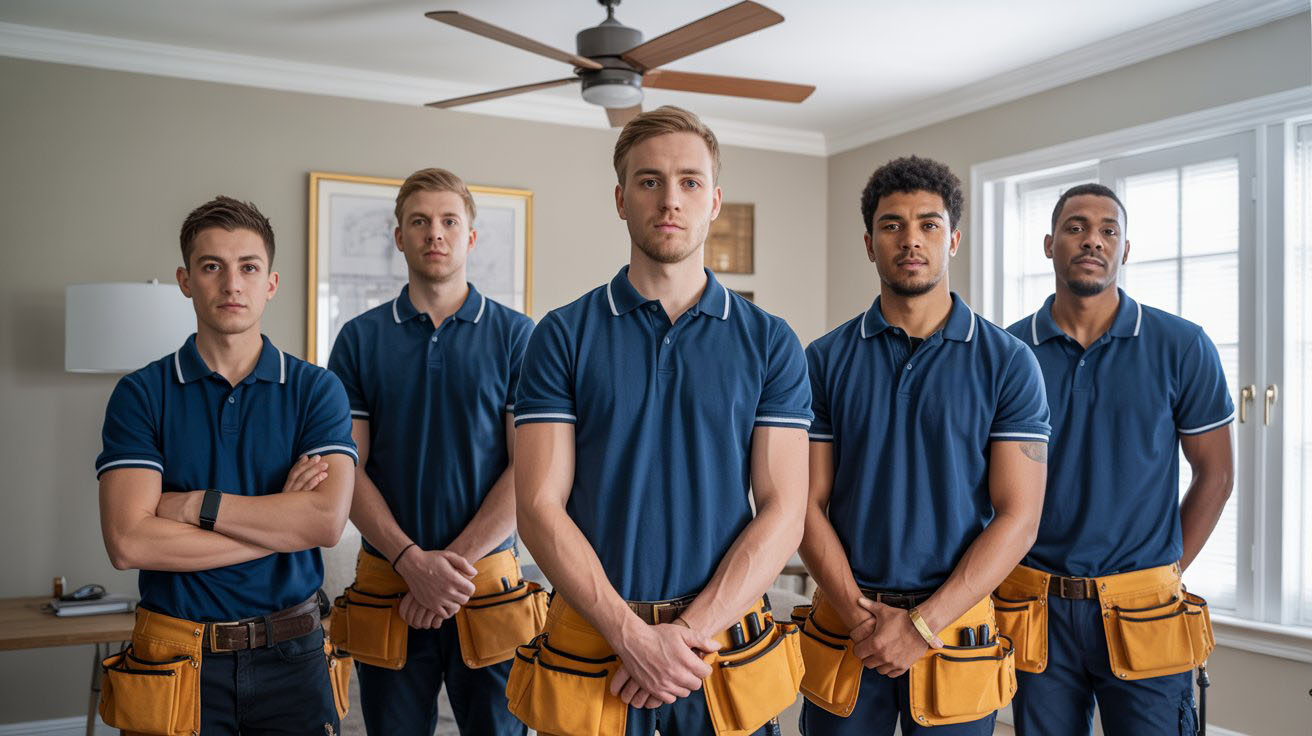Wiring an old building is never a simple task. Old electrical systems can be unsafe, outdated, or overloaded. You may be dealing with knob-and-tube wiring, brittle insulation, or panels that can’t handle modern loads. This guide walks you through the key steps to safely rewire an old property. Whether you’re a licensed electrician or a property owner planning to hire one, knowing the process helps you avoid delays, cost overruns, and fire hazards.
Table of Contents
- Inspect Existing Wiring
- Create an Electrical Plan
- Choose the Right Wiring and Panels
- Run New Wiring Without Damage
- Install the Updated Breaker Panel
- Test All Wiring and Fixtures
- Get Permits and Pass Final Inspection
Inspect Existing Wiring
Before touching anything, inspect the building’s current electrical system.
- Turn off the power at the main panel.
- Look for visible signs of damage such as brittle wires, scorch marks, or cracked outlets.
- Identify obsolete wiring types, such as knob-and-tube or aluminum wire.
- Check amperage capacity: modern homes need at least 100 amps.
Tip: Older buildings often have hidden junction boxes behind walls. Use a circuit tracer to detect them safely.
Create an Electrical Plan
You can’t just start pulling wires. Make a clear plan:
- Map out each room’s outlets, switches, and fixtures
- Designate dedicated circuits for high-power appliances (e.g., ovens, HVAC, dryers)
- Plan for GFCI outlets in kitchens, bathrooms, and basements
- Ensure all wiring meets local electrical codes
Pro Tip: Include future-proofing—run extra conduit or install smart home wiring if possible.
Choose the Right Wiring and Panels
New wiring must meet modern standards:
- Use NM-B (non-metallic sheathed cable) for interior residential wiring
- Install arc-fault circuit interrupters (AFCIs) for bedrooms and living areas
- Upgrade to a 200-amp panel if adding new loads
Common Mistake: Reusing old circuit breakers or fuse panels. Always replace outdated panels.
Run New Wiring Without Damage
Running wiring in old buildings takes finesse.
- Use fish tape or flexible drill bits to navigate behind plaster or lath walls
- Avoid cutting structural elements or damaging original features
- Label wires as you run them for easier hookup later
- Install metal nail plates where wires pass through studs
Preservation Tip: In historic buildings, run new wiring behind baseboards or within closet chases to minimize damage to walls.
Install the Updated Breaker Panel
Now it’s time to install the heart of the system.
- Mount the new panel in a dry, accessible location
- Connect all home runs from each circuit
- Label each breaker accurately
- Install the main disconnect if the panel is not near the meter
Reminder: Bonding and grounding must follow local code. Improper grounding is a standard safety issue.
Test All Wiring and Fixtures
Once the wiring is complete:
- Use a multimeter or circuit tester to confirm connections
- Test all outlets and switches
- Look for voltage drops, miswiring, or overloads
- Replace any questionable devices or fixtures
Get Permits and Pass Final Inspection
You can’t skip permits when rewiring an old building.
- Pull all required electrical permits before starting work
- Have a licensed electrician sign off on plans
- Schedule a rough-in inspection before closing walls
- Get a final inspection once work is complete
Final Step: Keep records of all inspections and permits for future resale or insurance.
Key Takeaways
- Inspect and document all existing electrical systems
- Create a circuit-by-circuit wiring plan
- Use modern wires, breakers, and GFCIs
- Work around the original architecture without damage
- Test every outlet and light
- Always follow the code and permit rules
FAQs
Q: Can I rewire an old building without removing walls?
Yes, but it requires careful wiring and planning. You may need to cut small access holes or use existing chases.
Q: Is knob-and-tube wiring dangerous?
Yes. It lacks grounding and can be a fire hazard. Insurance companies may also refuse coverage until it’s replaced.
Q: How long does it take to rewire an old house?
It usually takes 5 to 10 days for a medium-sized house, depending on access and the extent of work.
Hire a Licensed Electrician Near You
Rewiring an old building is not a DIY job for most people. It requires permits, knowledge of local codes, and experience with old construction. Contact a licensed electrician specializing in older buildings to ensure the job is done safely and legally.








